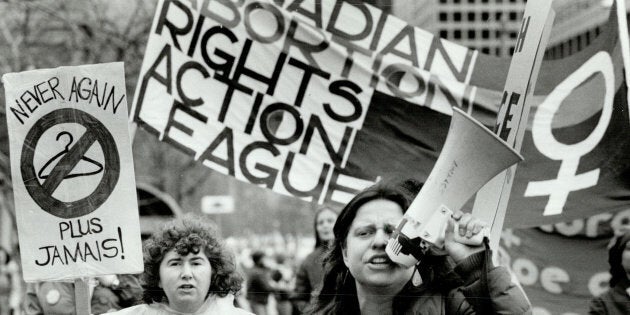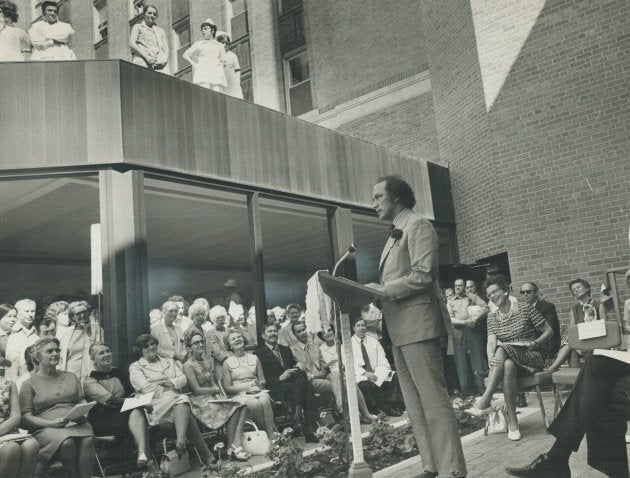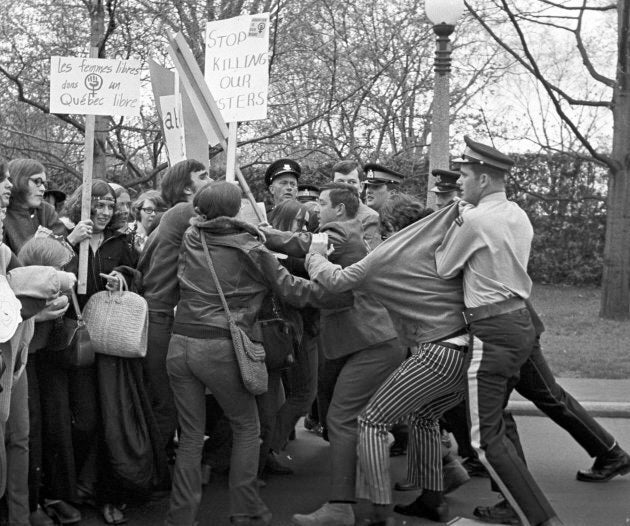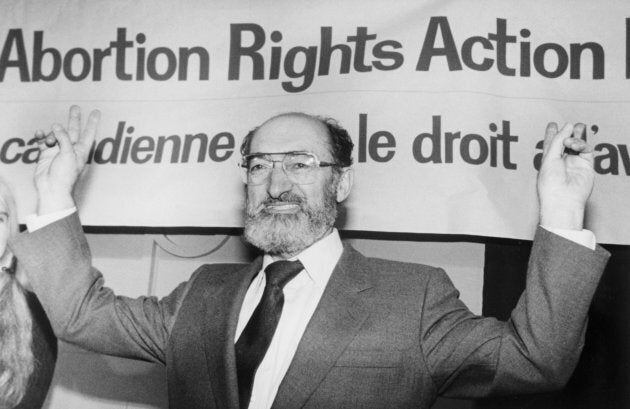
Some Canadians don’t seem to have a firm grasp on how abortion regulations function in our country. Given that a vote on whether or not to reopen the abortion debate was only narrowly defeated at the Conservative convention in Halifax in 2018, and that anti-abortion groups are celebrating, it seems like a topic we should all be more informed about.
Enter Dr. Jen Gunter, a practicing gynecologist and professional thorn in Gwyneth Paltrow’s side, who took to Twitter to let us all know how abortion actually happens in our country.
Common misconceptions
As Gunter explained in her Twitter thread, late-term abortions — which anti-abortion activists sometimes refer to as “partial birth abortions” — are extremely rare. The most recent statistics available from the Canadian Institute for Health Information, from 2016, state that only 616 of the nearly 23,000 abortions performed in Canadian hospitals that year took place after 20 weeks — approximately 2.7 per cent. As Gunter points out, this generally occurs only because of a direct threat to the mother’s life or a very serious birth defect detected in the infant. Gunter says risk factors include anencephaly, where a baby is missing parts of the brain and skull and usually dies shortly after birth; and Trisomy 18, a genetic disorder that often involves heart defects and severe intellectual disability, which kills nearly 90 per cent of infants before their first birthday.
As a Canadian doctor practicing in the U.S., Gunter also points out that she often encounters Americans who assume Canada’s relative lack of restriction means more abortions are performed here than in the States. In fact, the opposite is true. In 2014, the last year American data is available, there were 12.1 abortions performed per 1000 women aged 15-44 in the U.S.
In Canada that year, for every 1000 women aged 15-44, there were 8.03 abortions.
Story continues after video:
A brief history of abortion in Canada
Pre-1800: Abortion before four months, when fetal movements (called "quickening") began, is legal.
Early 1800s: As a result of a declining birth rate, regulations are implemented. (Regulations are handled provincially, not federally.) Abortion is first made illegal in New Brunswick in 1810, and by 1892, all forms of abortion and of contraception (!!!) are criminalized.
1892-1969: No Canadian woman has legal access to any means of birth control. This becomes a national crisis during the 1930s, when many families who could not afford to take care of their existing children faced crushing financial burdens of additional unplanned pregnancies. Several Canadian doctors including Dorothea Palmer, Elizabeth Bagshaw, Alvin Ratz Kaufman and Robert McCallum worked to provide contraceptive options to women, even under the threat of jail time.

1969: Under Pierre Trudeau's government, contraception is decriminalized and abortion becomes legal only under a very specific set of circumstances: a woman who doesn't want to carry through her pregnancy can only obtain an abortion if it is approved by a "therapeutic abortion committee," a tribunal made up of several doctors. Generally, permission is only given to women whose life or health is at risk.
1970: Pro-choice activists travel from Vancouver to Ottawa in an Oldsmobile, a Volkswagen bus, and a pick-up truck, known as the Abortion Caravan. When they arrive at Parliament Hill and politicians refuse to see them, they chain themselves to the parliamentary gallery in protest.
Later that year, Dr. Henry Morgentaler, who would become central in the abortion fight, has his Montreal office raided by police. He is charged with conspiracy to perform abortion.

1973: At his conspiracy trial, Morgentaler announces he has performed "between 6,000 and 7,000" abortions. He then goes through a messy three-year period of legal challenges and retrials. The Supreme Court rejects his appeal, but his charges are eventually dropped in Quebec. He serves 10 months in jail.
1975: A petition by anti-abortion groups with over one million signatures is delivered to the federal government in Ottawa.
1981: Manitoba cabinet minister and anti-abortion activist Joe Borowski announces his plan to fast for months to protest the enactment of The Charter of Rights and Freedoms, which he says will fail to protect the rights of a fetus. The charter is enacted the following year.
By this time, Borowski has been to prison four times for refusing to pay federal taxes due to the government's stance on abortion.
1982: The Charter of Rights and Freedoms is enacted. Many abortion-rights advocates argue that the pre-charter abortion restrictions violate women's new charter rights.
1983: A Gallup poll finds that 72 per cent of Canadians think the decision about having an abortion should be decided between a woman and her doctor, without government intervention.
That same year, anti-abortion politician Borowski uses the charter he had previously campaigned against to launch a new case, attempting to get the courts to declare the 1969 developments on abortion invalid. He argued that under the Charter, "fetuses have a constitutionally guaranteed right to life."

1983-4: Morgentaler opens an abortion clinic in Winnipeg, Manitoba, which is raided twice and is promptly forced to closed. He then opens a clinic in Toronto, which is also raided and shut down. Staff reopen the clinic several minutes later.
1988: In the landmark “Morgentaler ruling,” the Supreme Court of Canada strikes down the existing abortion law on the grounds that it violated women’s Section 7 Charter rights to “life, liberty and security of person.” The ruling states the existing law “clearly interferes with a woman’s physical and bodily integrity.”
1989: Joe Borowski’s lawsuit about the rights of a fetus is declared moot, since the abortion law had already been struck down.
That same year, in two separate cases, the Supreme Court and an Ontario provincial court rules that a man has no legal right to prevent a woman from seeking an abortion.
Where we are today
Since the existing criminal law against abortion was struck down in 1988, abortion in Canada is treated like any other medical procedure — which is to say it’s governed by medical standards and not by political will.
This has had a variety of consequences, not all of them obvious or intuitive.
For one thing, access to abortion has varied widely by region. Some provinces, such as Ontario and Quebec, have fairly high numbers per capita of hospitals or clinics that offer abortions, although people in big cities are far better served than people in rural areas.
In some other provinces, access is much more scarce, and many barriers still exist. In Nova Scotia, women needed a doctor’s referral to obtain a surgical abortion until this past February. There are still long waiting times for the procedure, and the alternative, a medical abortion or “the abortion pill,” is not covered by provincial healthcare. And there were no facilities that offered abortion anywhere on Prince Edward Island until 2017, following decades of activism by women in the province.
Anti-abortion activists like RightNow continue to campaign for political leaders who seek to limit abortion access. Abortion rights advocates, on the other hand, are looking to combat the anti-abortion “Pregnancy Crisis Centres,” which often purport to be politically neutral but that actually try to discourage women against abortions, sometimes working with federal funding. According to the Alberta Pro-Choice Coalition, this has been happening in Canada as recently as last week.
CORRECTION: This article originally stated that there were 23,000 abortions performed in Canada in 2016. In fact, that number refers only to abortions performed in hospitals that year. The article has been updated to reflect that information.
Also on HuffPost: